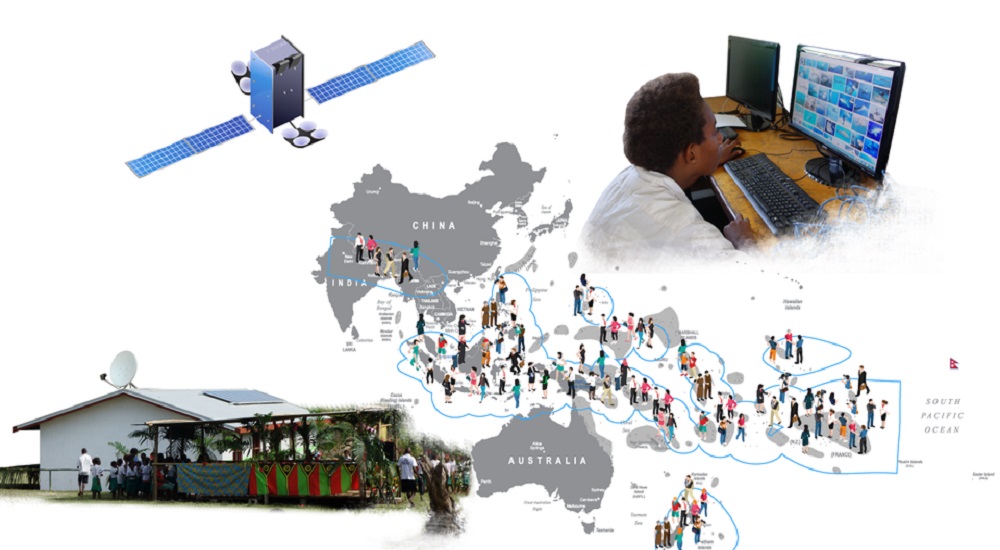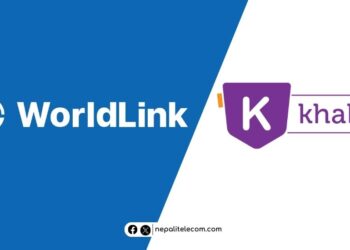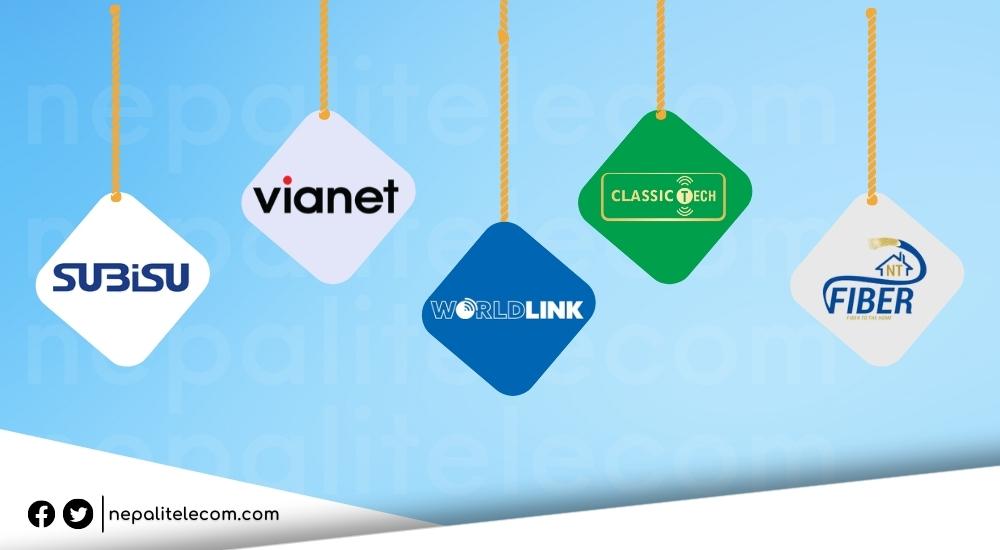Asia’s prominent broadband satellite operator Kacific has formally launched satellite internet service in Nepal in collaboration with Nepali ISP SpaceLink. The company announced the launch of its services at an event on August 15 in Kathmandu. The satellite service marks a new phase in Nepal’s wireless broadband internet service which could be leveraged to connect the remote and rural parts of the country.
Kacific is a leading satellite broadband internet provider in Asia. It covers 25 countries in South East Asia and the Pacific serving 600 million people through 56 Satellite Spot Beams. In Nepal, the company is bringing the service in cooperation with SpaceLink.
The company extended its services in Nepal in 2021 and NTA had already asked the government to allow the company to expand in Nepal. Likewise, the primary focus of the company is to ‘connect the unconnected’ in rural areas in Nepal.
While many companies have teased launching it previously, Kacific will get credit for commercially launching the first satellite internet service in Nepal. The company says preliminary testing has already been completed and the service is on for commercial rollout.
Also see: Fiber Internet Users Near 2 Million, 1 Lakh Added in a Month
Prospect for faster broadband in rural areas
Kacific’s entry into Nepal was facilitated after the Nepal Telecommunications Authority (NTA) opened up the Ka-band frequency for satellite internet services. The authority has now made frequencies of 19.7-21.2 GHz for downlink, and 29.5-31 GHz for uplink available which Kacific will use to deliver high-speed satellite broadband service. Kacific 1, the subsidiary of Kacific Broadband Satellites Group, will now use the spectrum to connect and benefit communities, government agencies, businesses, etc. all over Nepal.
Kacific uses Ka-band technology to connect people with spot beams and onsite 1.2m antennas. As per the company, its terminals are easy to use and available. The technology, it maintains, is rather new in Nepal but has been used in several other markets in Asia, some in mountaneous regions too. This raises the prospects for satellite communication in Nepal. Our neighboring country India’s main telcos Jio and Airtel have readied their satellite service with Elon Musk also preparing his own for the region.
With 80% of Nepali citizens living in rural areas, getting connectivity is not easy. The irregular terrain makes infrastructure setup maintenance harder and the small market size further complicates the feasibility of expanding the Internet service. However, satellite Internet comes as a blessing in disguise. Using satellite constellations, service providers can connect thousands to millions of people on the earth. Kacific wants to just to do- connect people in the Himalayan and hilly regions of Nepal with high-speed and highly reliable satellite broadband internet. All that its customers need is a small and easy-to-install satellite dish.
Kacific Satellite Internet Price and Packages in Nepal
The company has made a total of 7 broadband packages available. Depending on your requirements, you can opt for packages with 3/15/30/50/60/70/100 Mbps download speeds. The company provides less but decent upload speeds in the current packages starting from 3 Mbps to 20 Mbps.
But the cost is not going to resemble existing fixed-line internet packages. The satellite broadband packages come at a hefty cost for monthly renewals and first-time installation charges. Even the starter 3 Mbps package costs a massive Rs 17,610. Similarly, the 15 Mbps connection costs 25,415 and the 30 Mbps package costs 31,950. The premium 100 Mbps broadband package comes at a staggering Rs 550,655 per month.
| Kacific satellite broadband packages | Download | Upload | Monthly cost | Terminal installation charge |
| Simple | 3 Mbps | 3 Mbps | Rs. 17,610 | Rs. 88,140 |
| Everyday | 15 Mbps | 10 Mbps | Rs. 25,415 | Rs. 88,140 |
| 4 User | 30 Mbps | 10 Mbps | Rs. 31,950 | Rs. 88,140 |
| 7 User | 50 Mbps | 15 Mbps | Rs. 75,034 | Rs. 88,140 (offer price) / Original price Rs 159,100 |
| 10 User | 60 Mbps | 20 Mbps | Rs. 108,921 | Rs. 88,140 (offer price) / Original price Rs 159,100 |
| 25 User | 70 Mbps | 20 Mbps | Rs. 278,353 | Rs. 88,140 (offer price) / Original price Rs 159,100 |
| 60 User | 100 Mbps | 20 Mbps | Rs. 550,655 | Free |
As of now, Kacific has launched its services in Taplejung, Everest Base Camp (EBC), Soru (Karnali Province), and Kathmandu.
Also read: Kacific launches high-speed satellite internet in Soru, Karnali
First-time installation charges are costly, just like monthly renewals
Adding to the costlier profile, the first-time terminal installation is not easy with the budget either. For the packages with the 3/15/30 Mbps download speeds, subscribers need to pay Rs 88,140 for terminal installation. The company is offering the same cost offer for 50/60/70 Mbps packages against its original cost of Rs 156,100.
However, the company has waived charges on terminal installation for the premium tier 100 Mbps package.
Customers require 1.2m diameter terminals and modems to receive data packets from the Kacific satellite beams.
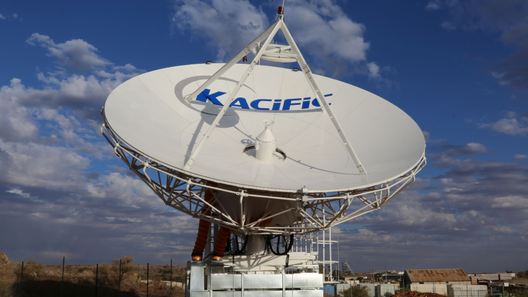
Check out: Best ISP Internet Service Providers in Nepal: Comparing Speed and Offers
Not for a regular user!
Nepal has long teased the idea of blanket internet coverage to close the digital divide across the country. However, it is not readily feasible due to the unfriendly geography making it adverse for laying infrastructure. That is why satellite internet service looks ideal in rural and remote areas. However, due to the cost of setup and maintenance, such services are costlier than what we get on fiber broadband. It looks like the case with Kacific internet packages too.
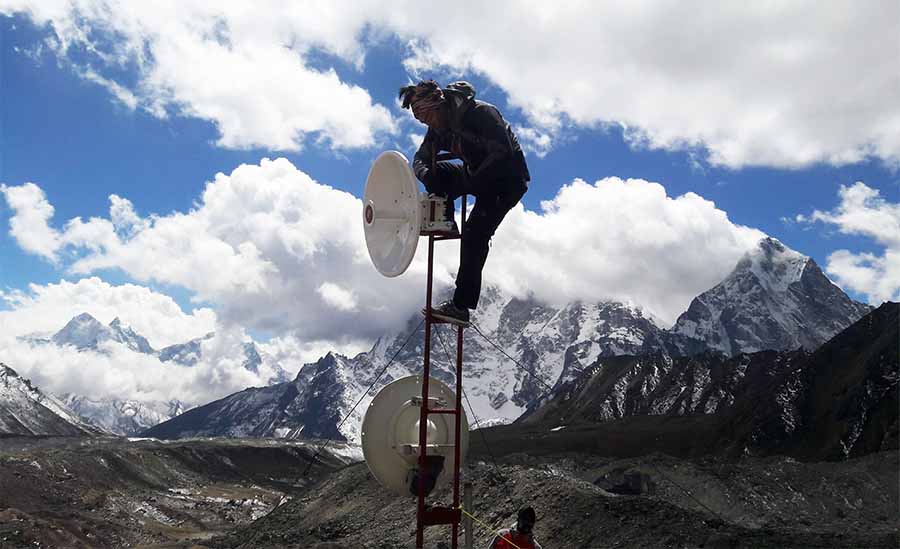
But there is a pragmatic side to it as well. Satellite internet won’t be the immediate choice for many living in trade centers and rural Terai. Fiber and mobile services cover a large portion of more developed areas in Nepal already. But in parts of the Himalayan, and Hilly region, it can bring much-needed wireless connectivity to a lot of people.
But if we go by the costs, the packages aren’t ideal for residential users. Corporate, government services, and other private organizations, however, may find it convenient where fiber and mobile broadband are not available.
As per NTA, 130.20% of Nepalese are connected by broadband internet service. Out of which, mobile broadband occupies an overwhelming 98.55% market share, and fixed-line broadband covers 31.28% of the total market. In such a context, a country such as Nepal whose large portion of geography lies in hilly regions, satellite communication becomes a must rather than an alternative.
Don’t miss: When Will Starlink Satellite Internet Launch in Nepal?
What is your opinion on the satellite internet costs and its usability by Kacific in Nepal? Do you think it will help achieve higher digital inclusion or put off its potential customers due to the high costs? Leave your opinion in the comments below.


